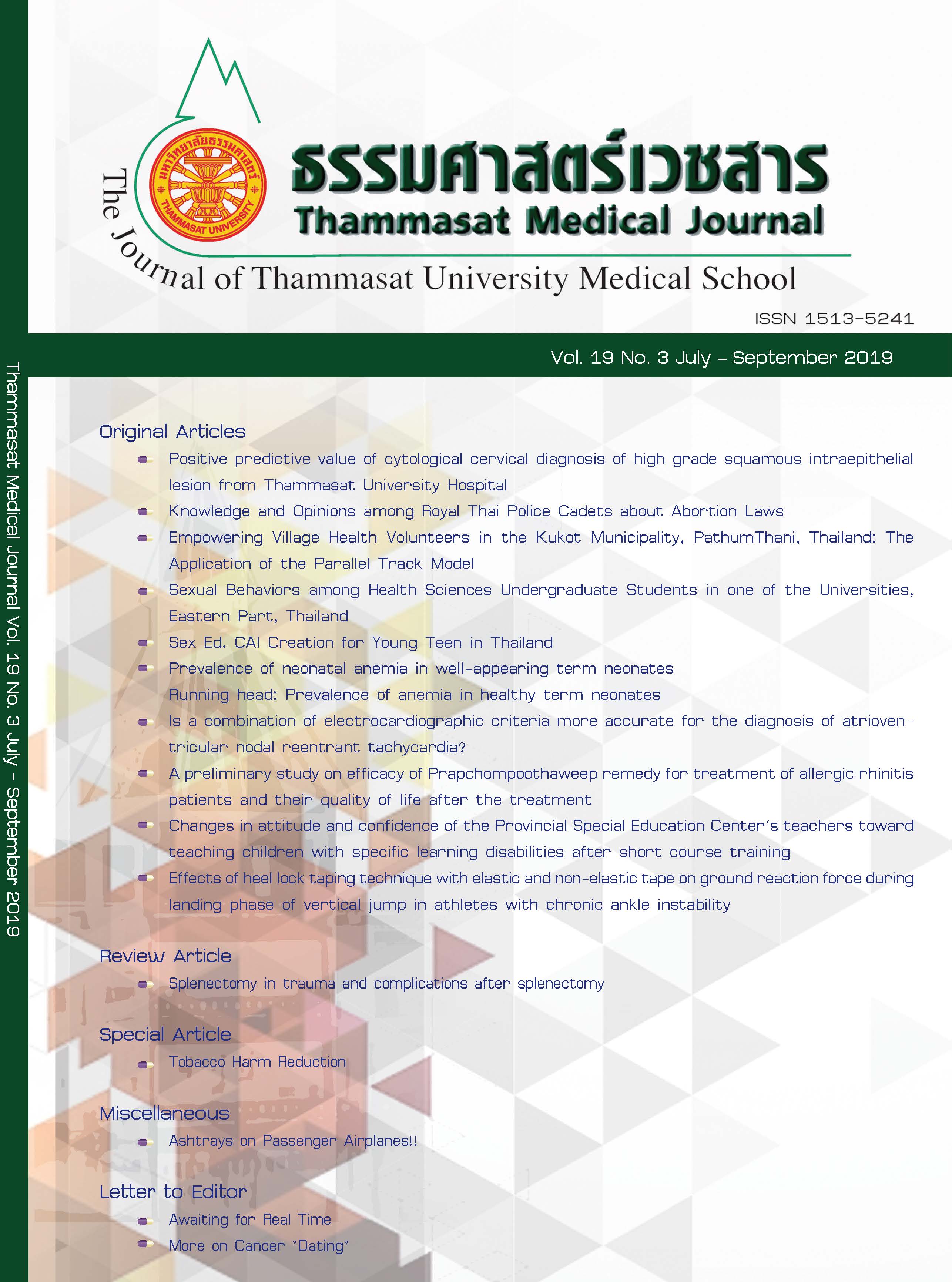Effects of heel lock taping technique with elastic and non-elastic tape on ground reaction force during landing phase of vertical jump in athletes with chronic ankle instability
Keywords:
Ground reaction force, Heel lock taping techniques, Chronic ankle instabilityAbstract
Introduction: Athletes with chronic ankle instability have higher ground reaction force during the landing phase of the vertical jump. This increases the risk of ankle injury. Heel lock taping techniques with non-elastic tape can decrease ground reaction force but cause side effects. Elastic tape can reduce the side effects, however, there is limited evidence that confirms a reduced ground reaction force with the elastic band.
Objective: To study the effect of heel lock taping with elastic and non-elastic tape on ground reaction force during the landing phase of vertical jump in athletes with functional ankle instability.
Method: Sixteen basketball and volleyball athletes with chronic ankle instability performed vertical jumps on a force plate to measure peak vertical ground reaction force and time to peak
vertical ground reaction force. Four conditions including taping (elastic taping (ET), non-elastic taping (NET), combined taping (CT), and non-taping (NT)) were randomly tested on the separate
consecutive days.
Results: Under the three taping conditions a decreased peak ground reaction force and an increased time to peak vertical ground reaction force were observed with significantly different mean
differences compared to NT (p < 0.05). Between the three taping conditions, NET was the most effective compared to CT and ET.
Conclusion: All taping conditions can decrease peak vertical ground reaction force and increase the time to peak vertical ground reaction force during the landing phase in athletes with chronic ankle instability.



